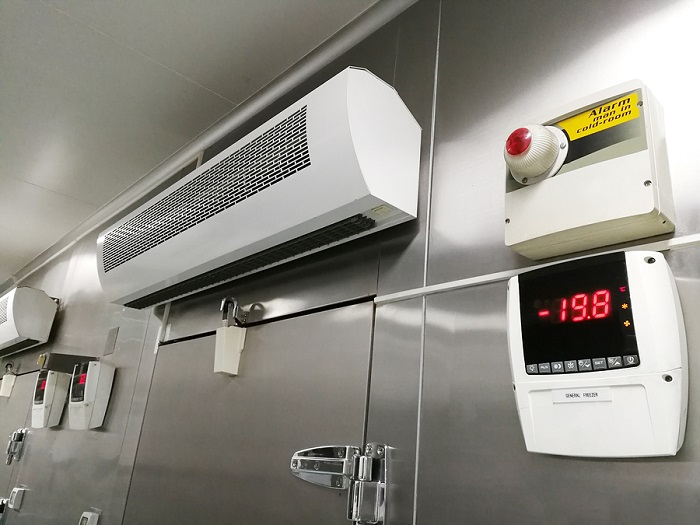
Working in ColdStorage
Workers in cold storage environments are at risk of cold stress, making personal protective equipment (PPE) a critical last line of defense against frostbite, hypothermia and death.
According to WorkSafe Victoria’s safe Operations of Cold Storage Facilities Handbooka cold environment is defined as one in which greater than normal bodily heat losses occur.
Hence without action to compensate for these losses, workers face the onset of cold stress through whole-body or local cooling, which includes extremity and respiratory tract cooling, wind chill and contact cooling.
Furthermore, the lower the temperature and the longer the exposure, the greater the likelihood of frostbite, hypothermia or death occurring.
However, while cold temperatures are a significant risk factor, high or cold winds (or airflow), dampness and cold water all contribute to cold stress. It means that it can also occur in temperatures as high as 10–15°C, alongside wind or rain.
Cold stress and cold-related illnesses:
Cold stress, frostbite and hypothermia are all risks when working in a cold storage facility.
Factors that increase vulnerability range from unfitness to simple awareness. To illustrate, it includes sweating, inadequate or poorly maintained protective clothing, footwear and equipment, some medical conditions, drugs and alcohol, poor training and lack of acclimatization to cold environments.
Symptoms of cold stress include shivering, accelerated breathing, increased pulse rate and high blood pressure, followed by reduced brain, nervous system, renal and liver function.
Extremities, such as hands, feet and face, may be affected by frostbite, which causes skin and tissues to freeze and can be recognized by gray-white patches, as well as tingling, aching, numbness, hardness and blisters in the affected areas.
Ultimately, once the person’s core body temperature drops below 35°C, hypothermia sets in. While the patient will be alert and shivering initially, as the situation becomes more severe, shivering stops and confusion, slurred speech, decreased breathing and lowered heart rate occur, followed by loss of consciousness and death.
Hazard control in cold storage:
As with all hazards, employers should follow the Hierarchy of Control and prioritize using higher level controls to reduce the risk.
In a cold warehouse, this means a few things. This can mean designing workplaces to minimize employee exposure to cold or using automated equipment to access cold areas. Likewise, choosing upright or deep freezers over cold rooms, or using forklifts with insulated/heated cabins is important.
Additionally, eliminating physical activities that may cause sweating in cold areas and screening employees to identify and protect those with relevant medical conditions from being exposed to the cold can reduce the risk of injury.
Where exposure to cold environments is unavoidable, administrative controls and PPE may be necessary.
In a Safety Alert issued by SafeWork SA, the following administrative controls were recommended for cold storage work environments:
- Set time limits for workers in cold rooms.
- Regularly test and maintain internal door opening mechanisms in cold rooms.
- Fit cold rooms with internal emergency alarms.
- Provide protective clothing appropriate for the duration and temperature of the activity.
- Use a buddy system to avoid working alone and ensure immediate aid in an emergency.
- Provide appropriate training and test drills in emergency procedures.
- Provide reliable communication systems.
PPE for cold storage environments:
Consequently, workers in frozen storage facilities should wear clothing, boots, headgear and gloves that protect against the cold. However, it should not impede their ability to perform necessary tasks.
clothing:
Most importantly, protective clothing should be well-fitted, visible, insulated, water resistant and durable, with zippers instead of buttons, which do not provide adequate insulation.
In addition, workers should have sufficient clothing to always have a spare, clean set available in case they get dirty or wet.
Boots:
Next, boots should be insulated, water and impact resistant, anti-slip, well ventilated, and flexible. By all means, it should also be large enough to allow for multiple pairs of socks and an insole for additional insulation.
In this light, take special care to ensure that boots fit with trouser legs effectively so that an adequate seal prevents cold air from entering.
Headgear:
A knitted beanie with a windproof jacket will typically provide sufficient protection to the ears and neck, while also allowing for the removal of layers to cool down if necessary.
Furthermore, a balaclava may be necessary in extremely cold environments or when sedentary.
Despite this, headgear should not hinder other protective gear from being fitted properly and worn correctly, including hearing and eye protection.
Gloves:
Lastly, gloves should be warm and well-fitted to allow for manual tasks to be performed, particularly as cold hands can increase the likelihood of an accident occurring.
Therefore they should fit snugly over or under jacket sleeves to prevent cold air from entering. For example, the new ProChoice Thermogrip Gloves which comes with an extended cuff for additional protection.
Moreover, if mittens are worn over gloves for increased insulation, they should attach to jackets so as not to get lost when removed to perform tasks that require more dexterity.
ProChoice Safety Gear has a wide range of gloves for most workplace tasks and environments.
Click here to view their full range of hand protection.
Sign Up for Exclusive Content
